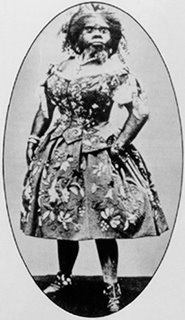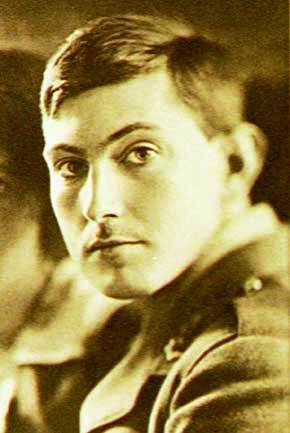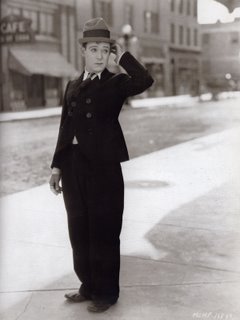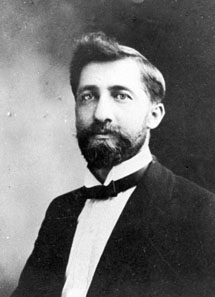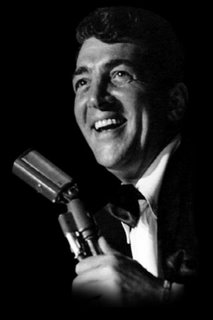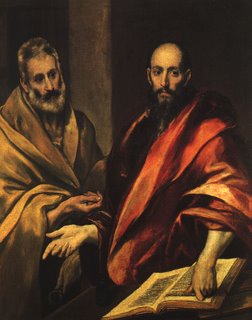
The feasts of Saints Peter and Paul, whose life-legends form much of the narrative of earliest Christianity, are celebrated today by many Christians around the world.
Peter was, of course, one of the 12 disciples of Christ. Originally called Simon, he and his brother Andrew were fishermen on Lake Galilee when Jesus called them to his side. After the arrival of John and James the Greater, the four of them -- Simon, Andrew, John and James, each hardy fisherman who could stand up to sudden squalls in the Gulf of Pigeons -- became Jesus' closest disciples, and big Simon was their spokesman and leader. Jesus nicknamed him "Peter" (the "rock"), although one of the interesting literary twists of the New Testament is that Peter seems like anything but the rock that Jesus knew him to be for much of Jesus' life story.
It is at the end, however, that Peter arises from his mistakes and shortcomings to lead Jesus' disciples and to build the church. Peter was strong and loyal, but a man of appetites and impulses; he might quibble with Jesus, stumble and lose steam, but he was warm-hearted and his faith was childlike and deep. Peter's house at Capernaum was Jesus' headquarters, and his boat was always at Jesus' disposal. When Jesus asked the disciples whom they thought he was, Peter spoke for them, saying "You are the Christ, the Son of the living God." Jesus responded by telling him, "You are Peter, and on this rock I will build my church, and the powers of death will not prevail against it. I will give you the keys to kingdom of heaven." However, Peter refused to believe Jesus' prediction of Jesus' own rejection and death, and Jesus rebuked him for his short-sightedness and attachments.
At the Last Supper, Jesus again predicted Peter's future leadership, while at the same time predicting that Peter would 3 times deny his involvement with Jesus, which Peter passionately contradicted. When Jesus began to wash the feet of his disciples, Peter protested and demanded that Jesus wash his entire body. After being chosen to stand guard in the garden of Gethsemane with John and James, he fell asleep, although he did stand to brandish a sword at Jesus' captors (which again brought a rebuke from Jesus). As predicted, Peter denied his connection to Jesus on 3 occasions after the arrest, but afterward, remembering Jesus' words, Peter repented of his weaknesses.
After Christ's crucifixion and burial, Peter was the first to enter Christ's empty tomb, and was the first to whom the resurrected Jesus showed himself. During a private appearance, according to the Gospel of John, the risen Christ 3 times instructed Peter to "shepherd the flock" and "feed the sheep," in effect redeeming him for his repentance. Peter took charge of the group after Christ's ascension, and according to the Book of
Acts, began to perform miracle healings in Jesus' name.
At the Council of Jerusalem, he disagreed with Paul over the desirability of a liberal policy toward Gentile Christians who did not choose to follow Jewish laws, but he agreed to the negotiated solution of James the Just that Gentile Christians could remain outside the Jewish tradition. With Paul as the crusader of the church outside Jerusalem, with Peter principally preaching at Corinth and in Asia Minor, the ways of the Gentile Christians prevailed; a new church, rather than a Jewish reform movement, was at hand.
Peter spent his final years at Rome, where he allegedly provided material to Mark for his Gospel. He was executed by being hung upside down on a cross in a general persecution of Christians in 64, and was buried, according to legend, on the site where the Vatican was built; very literally, he was the rock upon which at least the Roman Catholic Church was built. In the late 2nd century, Peter began to be identified as the first bishop of Rome, and the first in the succession of Roman Catholic popes. Having received the keys to heaven from Jesus, Peter is the protagonist of a million irreverent jokes about people trying to get in.
His comrade Paul was born a Jew whose father had Roman citizenship, and therefore he had 2 names -- the Roman "Paul" and the Jewish "Saul" after the first king of the Jews. Although his trade was making mohair for tents, Paul/Saul was an educated,
Torah-adhering man whose cultural identity was as a "pharisee," a Jew who as (at least) a quasi-rabbinical defender of the Jewish traditions of the Law, was unnerved by Jesus' popularity among Jews. Along with his fellow pharisees, he saw Jesus as a symbol of the decay of the Jewish world, and he did his best to belittle Jesus' teachings -- even to the point of persecuting his followers, approving (though possibly not actually participating in) the stoning of Stephen in 34 A.D. He excelled, however, at providing the intellectual underpinnings of the pharisees' attack on Jesus: a relentless partisan with a sharp, incisive mind and quick tongue, he was not the sort of person one wanted as one's enemy.
Then, suddenly and alarmingly for one who seemed so sure of himself, Paul/Saul's world flipped upside down. According to
Acts and his own testimony, shortly after Stephen's death, Paul/Saul was riding to Damascus in search of more followers of Jesus to taunt when he was knocked off of his donkey by a shaft of light much brighter than the desert daylight. Scrambling to his feet, he found that he was blind; and then, an unknown voice asked him, "Saul, why do you persecute me?" When Paul/Saul asked the identity of the voice, the voice replied, "I am Jesus of Nazareth." Paul/Saul was led to Damascus by his companions, where he rested, unable to eat or drink for several days, until one of Jesus' followers, Ananias, came to him and restored his eyesight by laying his hands on Saul.
Later, the converted Paul would say that the curious incident on the road to Damascus was the moment when the resurrected Jesus had personally visited him, just as he had visited his disciples in Jerusalem shortly after the crucifixion. Most strikingly, though, it was the moment when Paul suddenly felt empathy for the objects of his persecution, when he was able to divest himself of the comforts of his own dogma and in his blindness begin to view the world through the hopeful and compassionate eyes of Jesus' followers.
Following his conversion, Paul was as relentless in his advocacy of Jesus' message as he previously was in its opposition, focusing on the most powerful rhetorical elements of what Jesus said and did and what had happened to his followers to articulate a coherent intellectual formulation of the beliefs of the "Christians," Jesus' followers. Paul left Damascus for Arabia, where he tried out his new message: that Jesus the Messiah's baptism, death and resurrection represented for the disharmonious sons of Adam a new covenant with God in which they (we) have been entrusted with new tools to replace the Law: reconciliation, gentleness, forgiveness, compassion, love.
Paul returned again to Damascus, where his new missionary intensity was met with threats of violence, causing him to have to sneak out of town under cover of night. He continued to travel and preach, wandering into commercial centers as an itinerant tentmaker, making commercial connections with his targets, who would have the benefit of experiencing Paul as an ethical businessman before hearing his quirky message (a technique less calculatingly illustrated by Muhammad much later).
He visited Jerusalem 3 years after his conversion, arriving on Peter's doorstep like an excited fan club president coming to interview the rhythm guitarist who always stood just a few steps outside the spotlight of the rock star, talking a mile a minute. At first somewhat suspicious of this pharisee-by-reputation, the big-hearted Peter slowly realized that Paul was giving structure to his good intentions and embraced him.
With Paul's zeal came the community's first crisis: Paul had traveled to a number of places outside the Jewish world, where preaching about the
Torah would have been a
non sequitir; whereas in Peter's world, and that of Jesus' half-brother James, adherence to dietary laws and circumcision were part and parcel of Jesus' message. Paul the Jew struggled with this aspect of his mission, but was convinced that the central truths of Jesus' vision could be imparted to the Gentiles without requiring basic training in the Jewish tradition, and James would ultimately settle the quarrel by permitting Paul to continue his work with the Gentiles.
Paul spent the rest of his life touring and preaching, suffering persecution and hardship ("5 times have I had 39 lashes from Jews, 3 times been beaten by rods, once stoned, 3 times shipwrecked, adrift on the open sea for a night and a day . . ." and in Ephesus he was even forced to fight wild animals); but most importantly, he became the first Christian theologian, sending letters to the communities which he had seeded to provide instruction, correction and encouragement. In his
Epistles to the
Corinthians, the
Ephesians, the
Galatians, the
Philippians and others, he is sometimes an impatient father who feels it is his duty to deflate self-satisfaction among the children. While readers have debated the minutiae of his advice for 2 millennia, Paul wasn't ultimately interested in clothing or hairstyles (he was, however, self-conscious about the novelty of the Christian message and therefore wanted to make sure Christians didn't go around
looking too wacky), but rather the egalitarian respect and compassion with which people treated each other -- without division between rich and poor, slave and freeperson, or even man and woman.
(The most oppressive words ascribed to Paul, the misogynist statements contained in
First Timothy about keeping women silent, were probably not even written by Paul, and would in any event have been inconsistent with the behavior of the early church and Paul's overarching theological concerns.)
In 58, Paul was placed in protective custody by the Romans in Jerusalem after he was beaten by a crowd of Jews at the Temple who recognized him as the Jew who taught others to forsake the Law; he was later transferred to Caesarea to stand trial for disturbing the peace and profaning the Temple, where he was held for 2 years. At the trial, he asserted his Roman citizenship and expressed his desire to be judged by the emperor. After a long and hazardous journey to Rome, Paul waited another 2 years in prison before being released in 64, but was arrested again in 67 and beheaded during the persecutions by Emperor Nero. Tradition holds that he was buried at the later site of the Basilica of St. Paul Outside-the-Walls, on the Ostia Way, outside Rome.
"If I speak in the tongues of mortals and of angels, but do not have love, I am a noisy gong or a clanging cymbal. And if I have prophetic powers, and understand all mysteries and all knowledge, and if I have all faith, so as to remove mountains, but do not have love, I am nothing. If I give away all my possessions, and if I hand over my body so that I may boast, but do not have love, I gain nothing." -- St. Paul,
I Corinthians 13.
Labels: Christian History
